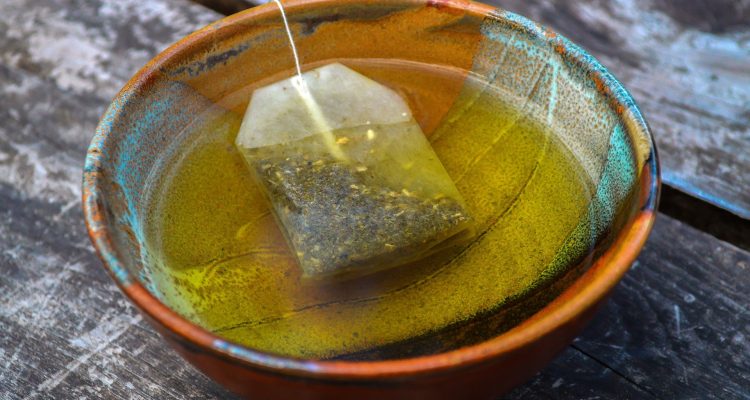Antioxidants may not be the only thing getting released when you dip that green tea bag.
◊ By Sundeip Bhatia
Visit ORGANIC SHOP by Pure & Eco India
Have you ever thought about how hazardous plastic tea bags can be when dipped in hot water? Recently, researchers at the McGill University in Canada analysed the effects of placing four different commercial tea bags in boiling water.
They found that a single bag releases around 11.6 billion microplastic particles, and 3.1 billion even smaller nanoplastic particles, into the cup in which they are submerged—thousands of times higher than the amount of plastic found in other food and drink!
A single bag releases around 11.6 billion microplastic particles, and 3.1 billion even smaller nanoplastic particles, into the cup in which they are submerged.
A different research conducted by researchers at the University Medical Center (UMC), Utrecht in The Netherlands, found that microplastics can cause damage to human immune cells. Microplastics, which are less than five millimetres in length, are either formed by the fragmentation of larger plastics, or are intentionally added to cosmetics and personal care products.
Tea bags are made with a variety of packing material such as nylon, rayon, thermoplastic, PVC or polypropylene. So, there is a chance of leachable and extractable microplastics being present in tea preparation.
We assume that our tea bags are made simply from tea and paper, but in actual fact an estimated 96% contain polypropylene – a substance used to seal them and ensure they hold their shape.
Tea bags are made with a variety of packing material such as nylon, rayon, thermoplastic, PVC or polypropylene.
SOME NEGATIVES OF TEA BAGS
Tea bags often contain dust & fannings
In tea bags, the size of the tea leaves are small because the whole leaves are chopped, sliced and diced into small particles ranging from 0.2 to 1.5 millimeters called fanning and dusts. As a result of all this chopping, the tea compounds interact with moisture and oxygen, leading to rapid quality loss.
Whole green tea leaves contain natural compounds such as antioxidants and polyphenols , and different essential oils, which make tea flavoursome.
Tea bags have less EGCG content
Green tea generally has the highest amounts of EGCG (Epigallocatechin gallate), a chemical which contributes to higher antioxidant, weight reduction and anticancer properties, while oolong and black tea have significantly less because they are either partially or fully oxidised.
Teas made from Camellia sinensis have higher EGCG content than teas made from the assamica tea plant.
But green tea bags have lesser quantity of EGCG. A study conducted in 2012 confirmed low levels of ECGG present in marketed tea bags. The study confirmed presence of 1.09 to 2.29mg of ECGC in each tea bag, which is too little to produce therapeutic antioxidant activity.
They pose a threat to the environment
Since they are made up of plastic, they don’t decompose and act as a threat to the environment. As per to the Environmental Audit Committee, tea bags are the chief source of pollution for our water systems due to their non-recyclable components.
Taste can vary from bag to bag
All the green tea bags in one pack don’t taste similar. It actually depends on the number of times you have dipped the tea bag. Sometimes this results in the loss of nutrients and antioxidants. The string, which is attached to the bag with a little staple, can lend a slight metallic taste to the tea as well.
Therefore, as consumers, we need to question brands about the material they use in their tea bags. We should opt for tea bags that are completely biodegradable, plastic-free, or made of plant-based materials.
It’s not just about having tea that tastes great. It’s about having tea that tastes great and is also good for us by being plastic-free!
Your tea bag should also be free of epichlorohydrin, a chemical some manufacturers add to prevent the bags from breaking down quickly.
ABOUT THE AUTHOR

The author is Business Head- India, Shilpa Medicare Ltd.



Leave a Reply